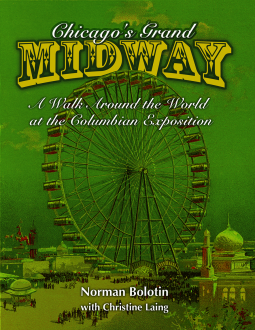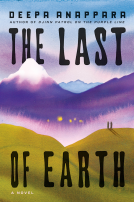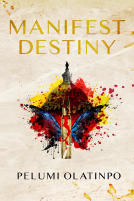
Chicago's Grand Midway
A Walk around the World at the Columbian Exposition
by Norman Bolotin, Christine Laing
This title was previously available on NetGalley and is now archived.
Send NetGalley books directly to your Kindle or Kindle app
1
To read on a Kindle or Kindle app, please add kindle@netgalley.com as an approved email address to receive files in your Amazon account. Click here for step-by-step instructions.
2
Also find your Kindle email address within your Amazon account, and enter it here.
Pub Date Jun 19 2017 | Archive Date Jun 19 2017
Description
Created as a centerpiece for the Columbian Exposition of 1893, the Midway Plaisance was for one summer the world's most wondrous thoroughfare. A journey along its length immersed millions of spellbound visitors in a spectacle that merged exoticism with enlightenment and artistic crafts with dizzying technical achievement.
Norman Bolotin, with Christine Laing, draws on his vast knowledge of the 1893 exposition to escort readers down the Midway. Step by step he takes you past forbidding Dahomeyans and dozens of belly dancers until, at last, you reach the colossal Ferris Wheel with cabins the size of street cars. The tour reveals the immense scale and variety of the experience in sensual detail--the thirsty crowds and pungent aromas of exotic foods, the Libbey Glass Factory and the screams from the Ice Railway, the snake charmers and the hawkers selling a thousand souvenirs. Throughout, Bolotin details how the organizers--encouraging patrons to spend a little here and a little there--brought off an extravaganza that paid its costs and achieved every one of its goals, including profitability for the fair and immortality.
Norman Bolotin and Christine Laing manage the History Bank in Woodinville, Washington. Their books include The World's Columbian Exposition: The Chicago World's Fair of 1893.
Advance Praise
"A must-have for readers fascinated by world's fairs and turn-of-the-nineteenth-century America."—Booklist
"A must-have for readers fascinated by world's fairs and turn-of-the-nineteenth-century America."—Booklist
Available Editions
| EDITION | Paperback |
| ISBN | 9780252082429 |
| PRICE | $22.95 (USD) |
| PAGES | 176 |
Links
Featured Reviews
 Miranda F, Reviewer
Miranda F, Reviewer
This is a very informative and fun look at the Chicago Columbian Exhibition. I enjoyed seeing pictures of the Midway and the Fair itself. The Fair was one of those touchstone Chicago moments that I love to read about.
 Geoffrey S, Librarian
Geoffrey S, Librarian
For those readers who may have been tantalized and teased by the descriptions in Erik Larsons "The Devil in the White City" and those who may just be interested in knowing more about the grandeur that was the World's Colombian Exposition, Bolotin and Laing's work is the absolute perfect book. Through the written word and a wide assortment of photos, they have successfully created a delightful tour that is so detailed that their book ends up becoming something of a literary time machine that takes its audience on an exquisite trip back to 1893 Chicago.
 Dona B, Educator
Dona B, Educator
What a cool topic! What a cool book! I love getting to examine the photographs and details about attendance and money taken in by Chicago's Grand Midway. I also appreciate the extensive list of sources at the end of the book. First rate research writing!
 Anita W, Reviewer
Anita W, Reviewer
I know very little about World Fairs, but they've always fascinated me. I'm a similar age to the author and British, and I recall the interest in the Brussels Fair when I as a child. Seattle was the one that really inspired with the futuristic needle, the dawn of space travel and an Elvis Presley film to further highlight the interest. So I was delighted to have the opportunity it's to see an advance review copy of this book and it's truly incredible.
I've viewed it on an iPad and the photographic detail is amazing. So many of the photos look fresh and leap from the page. I had no. Idea that the Ferris wheel at thus time was such a mammoth construction and the contemporary pictures and plans give a real feel for the scale of the event, bringing it to vibrant life.
The scope, diversity and vision of the entire exposition is just mind blowing. In a digital age, it must be difficult to fully understand the importance of an event like this. I was surprised to learn that the British Crystal Palace fair was actually the first 'world' fair; a phrase coined by Prince Albert, Queen Victoria's husband. But the scale of that event is dwarfed by the Chicago exposition and it's genuinely incredible to gain such detailed insight into how the area was set out and visualise the exhibits, people and landscape.
This is a book, in my view, best appreciated in hard copy. It's the type of book to browse and savour. If I could turn back time, this is a place and time I'd truly love to visit.
My thanks to University of Illinois Press for a review copy via Netgalley.
 Greg Y, Reviewer
Greg Y, Reviewer
My interest in this book was piqued having read Erik Larson's The Devil in the White City a while ago, also set at the 1893 Chicago World's Fair. This is quite a different book to Larson's however, written by a much more serious researcher into the Fair.
Bolotin starts with a preface explaining how his keenness on this subject was engendered during his childhood in Seattle, where a World's Fair was also conducted. It's clear that this book is the result of a long and abiding passion for the subject matter.
The book proper starts with a brief account of how Chicago unexpectedly won the right to host the 1893 Fair over New York and the early planning. Bolotin then delves into the heart of the book: the Midway Plaisance, which formed such a crucial part of the Fair.
The Midway Plaisance was a 1 mile long boulevard that ran from the White City, where the main country and industry exhibitions were, down towards the shores of Lake Michigan. Fair organisers struggled to figure out how to incorporate the existing Midway into the fair site, and what could be done with it. Relatively late in the piece, it was decided to use it to house a range of entertainment and food concesssions plus a range of ethnographic "villages" that fairgoers could visit and observe cultures from other countries. Austria, Germany, Java, Egypt, Persia, the South Seas, Lapland and Dahomey (now Benin) were among the countries and cultures exhibited.
Bolotin structures his book as a walk down the Midway Plaisance from West to East, and then back again on the other side. Each attraction that fairgoers would have passed on the Midway is described, often with some background about its origin. Bolotin's research even extends to giving us details of the number of visitors that each concession attracted, and how much revenue they took.
Dominating the Midway Plaisance was the first ever Ferris Wheel, a gigantic 264 feet high structure that Chicago commissioned as an attraction to compete with the Paris Fair's Eiffel Tower. George Ferris' wheel was positioned roughly in the middle of the Midway and cast its huge shadow down on the throngs of visitors. It had cars similar to railway carriages, each holding about 60 people, and the Wheel overall carried up to about 2,000 riders at once. Its 71-ton axle was the largest ever built. Little wonder that this engineering marvel was the must-do activity of the 1893 Fair.
This description of a walk along the Midway is accompanied by a copious amount of contemporary photos of the attractions, plus tickets, programs, architectural drawings and other memorabilia, mostly from the author's own collection. The photos in particular reward close examination, giving a great insight into the characters roaming around the Midway and its villages, their dress, and the activities that they got to do. There are some priceless moments captured in some of these photos, notably a little girl on her first donkey ride, and a man trying to climb onto a camel. The book also includes a range of beautiful colour plates by contemporary artist Charles Graham; it is fun to compare these to the photos and observe the artistic license taken.
Bolotin does a great job of transporting the reader back to a time when things that we take for granted were new and strange, and getting us to see these wonders as the fairgoers would have. If I would quibble at all, I would say that he gives us the feast for the eyes, but he does not quite capture the sense of the crowds, the noise and the strange smells that must have gone along with it.
I read this book as an e-book but I really think that, with the photos, illustrations and colour plates, this is one of those books that cries out to be enjoyed in physical book form.
Readers who liked this book also liked:
James McBride
General Fiction (Adult), Historical Fiction, Literary Fiction
Sean Sherman; Kate Nelson; Kristin Donnelly
Cooking, Food & Wine, History, Multicultural Interest
Alice Evelyn Yang
General Fiction (Adult), Literary Fiction, Sci Fi & Fantasy
Melissa Slager
General Fiction (Adult), Historical Fiction, Multicultural Interest
Pelumi Olatinpo
Essays & Collections, Multicultural Interest, Politics & Current Affairs


















